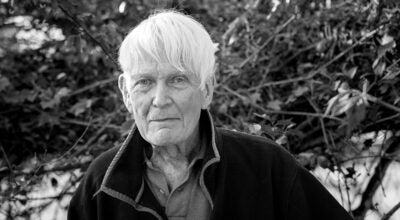The Nature Corner: The holiday season
Published 11:13 am Saturday, December 18, 2021
|
Getting your Trinity Audio player ready...
|
By Ernie Marshall
The summer of 1968 my wife, two year old daughter and I took a week’s vacation to Hawaii. I am eager to offer recollections from that week but that is an entire column, perhaps about the ecology of Pacific volcanic islands. However, here is a single incident I want to share from the final day of the trip.
We were on the bus returning us to the airport for the flight home. The driver was taking the drive to the airport for his last time. He was going home, back to the mainland U.S.A. We asked him why he was leaving paradise, beautiful scenery and all set in the perfect climate. For him, two things were wanting in paradise.
The islands were too small, felt confining. He said the first thing he was going to do upon his return was to get in a car with a full tank of gas and drive across several state lines.
The second thing he missed, he said, were seasons. He missed a white Christmas, trees turning colors in the fall of the year, the burgeoning of fresh greens and flowers with the spring.
We take seasons for granted, so I want to ponder a bit about why our world has seasons, and about their importance to our various holidays. The holidays would not be the same without Earth’s seasons, and vice versa.
So first of all, why does our planet have seasons? Earth has an “axial tilt” of just over 23 degrees, it’s “tilt” away from a vertical axis of rotation. You have probably noticed this with globes, your own or at a school or library. You spin it and it is set to spin at a “tilt” or “lean.” Thus Earth “leans toward” the sun in summer and receives longer periods of continuous light and more direct rays of light, and in winter the opposite (and fall and spring are “in between”). The day of the maximum of light (having the most hours of daylight), is marked as the Summer Solstice or the First Day of Summer; the day of minimum light, fewest hours of daylight, marks Winter Solstice or First Day of Winter. Fall and Spring Equinoxes have equal periods of daylight and night, and mark the beginnings of Fall and Winter. These events take place each year, Winter Solstice December 21, Vernal Equinox March 20, Summer Solstice June 20, and Autumnal Equinox September 22.
I wrote a column some years ago titled “Nature’s New Year.” Trying to put these puzzle piece together again has given me a headache, so let me move on to holidays. Our holidays seem to collect around Winter Solstice, and the Vernal (Spring) and Autumnal (Fall) Equinoxes. Winter is a time of dying, “hard times” and fear for the future; Spring of renewal and a return to life; Fall a time of harvest, nature’s bounty.
The two most hopeful events in nature are surely, Winter Solstice, marking the season’s beginning of longer, warmer days, and Vernal Equinox, the season of renewal and regrowth. The events coincide, respectively, with Christmas and Easter. Nature’s hopeful signs of more light and warmth is paralleled by the theme of hope with Christmas, repeated in Christmas Carols, “Glad Tidings of Great Joy,” “Joy To the world!” and so on, culminating with the burgeoning of spring which parallels the story of Christ’s death and resurrection. Easter was long accepted by Christianity as the more important of those two holidays. The date for Easter each year varies, because it was set by the Council of Nicea in 325 AD as the first Sunday after the full moon following Vernal Equinox.
Holidays tend to cluster around Winter Solstice and the two equinoxes. Besides Christmas there is New Year’s and several Jewish holidays are midwinter celebrations, including Hanukah, coinciding with Christmas (December 28-30). It is referred to as “the Festival of lights” and light is commonly associated with the holidays of this season: lighted Christmas trees, lighted house and yard decorations, etc., which is an ancient tradition harking back to lighting bonfires at Winter Solstice to help drive winter’s darkness away.
I’ve mentioned Easter as an important holiday associated with Vernal Equinox, and Autumnal Equinox is the season for Thanksgiving and Halloween and in the Jewish tradition, Rosh Hashanah, followed by Yom Kippur, are in September and October.
I should mention that Halloween and Valentine’s Day seem more “pagan,” since the former calls up ghosts and goblins, the latter, a chance to celebrate romantic love rather than religious themes. However, both originated as Christian holidays. “Halloween” was originally “Hallowed (Holy) Eve,” the evening before All Saints Day; and Saint Valentine was thought to be a Christian bishop who married Roman soldiers, which was forbidden by Emperor Claudius II; he was executed for his defying the emperor. The emperor supposedly decided that his soldiers would fight for his cause more bravely it they were not distracted by the love of a woman.
Let us take a last look at how unique Earth’s seasons are. All of the planets in our solar system except Mercery have an axial tilt. It is different with each. Uranus is the most extreme at 97 degrees. So it rolls around its orbit something like a bowling ball. Mostly the origin of this is unknown. With Saturn, the tilt is thought to be caused by the gravitational tug of its many moons. With Earth, a theory has it that our moon was created from Earth, torn from it in some long ago collision and the point and angle of impact created the tilt.
The middle or temperate latitudes are where our seasons are most pronounced. (We are at about 35 degrees N latitude here in North Carolina, the U.S. [north to south] spans about 20 degrees of latitude.) So we get the “Goldilocks effect,” neither too hot (the equatorial region) nor too cold (the polar regions).
A fine place to call home. So let us count our blessings in these holidays and take good care of Earth.
Ernie Marshall taught at East Carolina College for thirty-two years and had a home in Hyde County near Swan Quarter. He has done extensive volunteer work at the Mattamuskeet, Pocosin Lakes and Swan Quarter refuges and was chief script writer for wildlife documentaries by STRS Productions on the coastal U.S. National Wildlife Refuges, mostly located on the Outer Banks. Questions or comments? Contact the author at marshalle1922@gmail.com.
FOR MORE COLUMNS AND LETTERS TO THE EDITOR, CHECK OUT OUR OPINION SECTION HERE.




